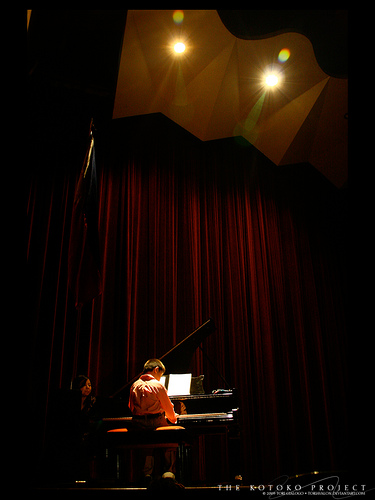 A recent NY Times Sunday Magazine featured an article about child prodigies, musical and otherwise. In it there was a discussion of well-roundedness (or the lack thereof) of extremely gifted young people. The author, Andrew Solomon, says in the article, “Musicians often talked to me about whether you achieve brilliance on the violin by practicing for hours every day or by reading Shakespeare, learning physics, and falling in love. ‘Maturity in music and in life, has to be earned by living, the violinist Yehudi Menuhin once said.'”
A recent NY Times Sunday Magazine featured an article about child prodigies, musical and otherwise. In it there was a discussion of well-roundedness (or the lack thereof) of extremely gifted young people. The author, Andrew Solomon, says in the article, “Musicians often talked to me about whether you achieve brilliance on the violin by practicing for hours every day or by reading Shakespeare, learning physics, and falling in love. ‘Maturity in music and in life, has to be earned by living, the violinist Yehudi Menuhin once said.'”
This concern about the children’s musicianship was not resolved in the article. But reading it raised for me the question about arts organizations being part of the world rather than separate from it. As I write this, I am in the midst of preparing for the first of my Mainstreaming Engagement workshops which I will have presented in Illinois by the time this post gets published. One element of the workshop will be examining the community in which the arts organization exists.
Based on work done by a friend of mine, Harv Thompson, a retired U Wisconsin-Madison professor who serves on the Gard Foundation Board with me, I’ve compiled a list of questions about community for arts professionals to ask themselves. The questions ask who the “people to know” are in government, schools, not-for-profits, and grassroots associations. As I was putting them together I realized that I knew the answers to some, but by no means all or perhaps even the majority of them.
The purpose of the questions is at least three-fold. First, community partnerships can only be forged with people you know. Engagement is about creating and maintaining relationships after all and you can’t develop those relationships until you know the names of the people! Second, the questions highlight the many facets of the community that there are that might be useful partners for improving community life. Simply thinking about the questions may inspire ideas for collaboration. And third, they have the potential for reinforcing an awareness of just how disconnected we in the arts sometimes are from those outside the arts world (other than donors/potential donors). If any of you are interested, it is my hope to make these questions generally available in some way before too long, probably via the ArtsEngaged website. But I’m running too fast simply to stay ahead of myself to figure out how and where right now. [OK. Here’s a late addition to this post: see the questions at Understanding Your Community.]
The principal awareness for me here is a reminder that arts organizations historically have had (again with the exception of donor relationships) a prodigy-like remove from the community around them. If engagement is critical for their well-being, becoming organizationally well-rounded, experiencing and “being of” the community in partnership with others, is a vital element of sustainability.
Engage!
Doug
Photo ![]()
![]()
![]() Some rights reserved by The Kotoko Project
Some rights reserved by The Kotoko Project

I agree! Great analogy.